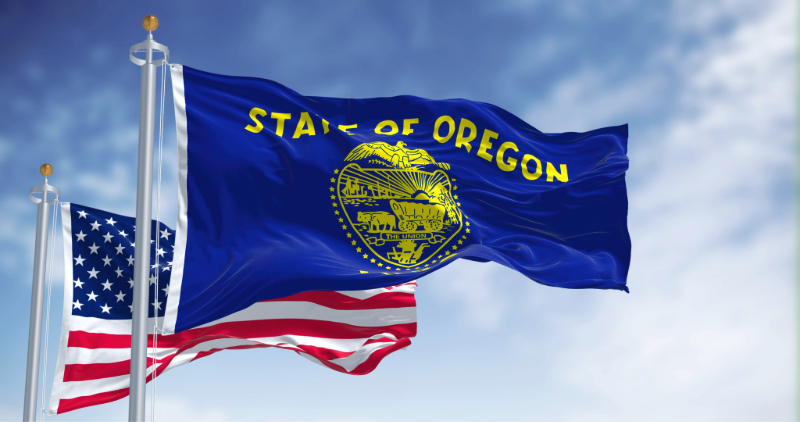When Oregon Governor Tina Kotek signed House Bill 3342 on May 29, 2025, the state set in motion the first full-scale modernization of its Water Code since the late 1990s. The new statute does not reorder the time-honored doctrine of prior appropriation, but it completely rewires the processes for filing, reviewing, transferring and enforcing water rights.
For landowners, investors and municipal planners alike, the law’s operative date, April 1, 2026, marks a sharp break between “how things have always worked” and a faster, more data-driven future. The two tables below capture the key procedural pivots and illustrate what a typical user will experience before and after the reform.
| Theme | Pre-HB 3342 | HB 3342 changes (operative 1 Apr 2026) | Likely practical effect |
|---|---|---|---|
| Filing & service of documents | Paper or certified hard-copy; fixed fees. | E-filing & e-notice allowed; fees may be reduced or waived. | Lower cost, quicker turnaround; demand for e-submission platforms. |
| Public notice of applications | Multiple newspaper ads. | Single weekly web notice by WRC; newspaper ads only for large cases. | Advertising bills drop; creates market for subscription alert feeds. |
| Intake & preliminary review | Files could languish for years. | 15-day completeness check, 30-day review, strict cure deadlines. | Backlogs shrink; “application-readiness” consultants gain value. |
| Phased fee payment | 100 % exam fee up front. | Split fee (initial + balance after review). | Reduces sunk cost; discourages speculative filings. |
| Withdrawn / restricted sources | Often discovered late in the process. | Mandatory 15–30 day return with refund if source on §13 list. | Fast certainty; fuels “can-I-apply?” mapping apps. |
| Transfers in restricted aquifers | No clear statutory rule. | Explicit denial authority, narrow mitigation exceptions. | Well-move strategies harder; boosts mitigation-bank demand. |
| Permit development timelines | 5 yrs (most) + unlimited extensions. | 7 yrs base; single extension only (2–20 yrs). | Forces project-ready capital planning. |
| Automatic final orders | Agency action required to finalize. | No protest → order final in 33 days automatically. | Tighter protest windows; predictability for investors. |
| Electronic payments | Limited card use; agency ate fees. | Cards accepted for all fees; surcharges passed through. | Opens door for specialized payment-portal vendors. |
Why it matters: By stripping away paper requirements and long extension cycles, HB 3342 compresses the life-cycle of a water-right file from years to months. That acceleration rewards applicants who come to the table with mature hydro-geologic data, and penalizes those who do not. Meanwhile, a single on-line notice portal amplifies transparency: every investor, NGO or competitor can monitor new filings in real time, making early stakeholder strategy essential.
| Scenario | Pre-HB 3342 | After HB 3342 |
|---|---|---|
| Small farmer seeks new ground-water permit in a critically-restricted basin | File sits for years before denial. | Returned within 15 days with refund if basin on §13 list. |
| Irrigation-district temporary transfer | Dual newspaper ads; 30-day protest. | One web notice; 30-day comment; protest only if issues raised. |
| Hydroelectric preliminary permit | Paper filing, ads in every county. | E-filing; single web notice; newspaper ads only for mega-projects. |
| Applicant submits incomplete map | Endless deficiency letters keep file “alive.” | 30-day cure or file closes-priority date lost. |
Strategic Take-Aways
- File early, file perfect. Priority still rules, but a sloppy application now self-destructs in weeks.
- Expect faster closes and shorter protests. The 33-day automatic-order rule means legal teams must prepare protest strategies in advance of weekly notices.
- Mitigation banking will surge. Denials of aquifer-change applications create immediate demand for ground-water credits and aquifer-storage-and-recovery (ASR) expertise.
- Legacy filings face triage. Thousands of “zombie” applications will be returned on day one; consultants who can re-package or redirect them will be busy.
Oregon House Bill 3342 brings the state’s water rights framework into the 21st century. It emphasizes responsible water use, increases transparency, and ensures the long-term sustainability of our most precious resource.
But with these changes come new obligations for applicants, permit holders, and communities. From stricter deadlines to digital notices, the water rights process is now faster, more structured, and less forgiving of delays.
If you’re planning to apply for a new right, amend an existing one, or monitor activity in your region, now is the time to get up to speed.

